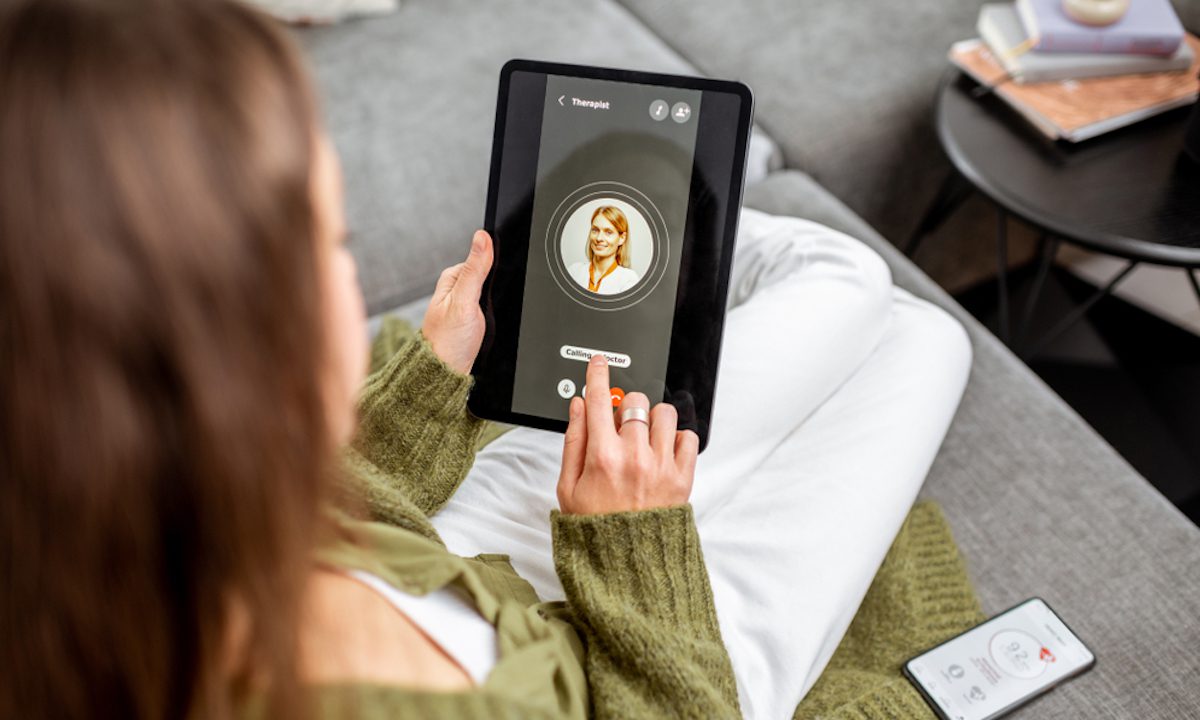New Report: Healthcare Morphing Into HealthTech as Millennials Go for Digital Doctoring

Of all the economic sectors with the suffix “tech” stitched on, “healthtech” makes immediate sense to consumers and practitioners alike, as the pandemic continues pushing new paradigms in the delivery of healthcare and smarter, faster ways of paying for that care.
For the new study, Generation HealthTech: How Digital Tools Amplify Millennial Patient Loyalty, a PYMNTS and Rectangle Health collaboration, researchers surveyed a census-balanced panel of more than 2,260 U.S. consumers to discover what makes people feel better when choosing healthcare providers and corresponding digital experiences during the pandemic era.
Finding that “consumers want digital options that save them time in communicating with healthcare providers and allow them greater interactivity on their own terms,” Generation HealthTech adds that “consumers also want access to tools that help them limit friction when paying for healthcare, such as upcoming payment reminders and payment plans.”
Focusing on millennials and bridge millennials, the report finds that these cohorts prefer more digital touchpoints with healthcare providers. This led researchers to conclude that “healthcare provider accessibility and user-friendly healthcare communications likely are essential components of a positive patient-provider relationship for most millennial consumers.”
See also: Generation HealthTech: How Digital Tools Amplify Millennial Patient Loyalty
Diagnosing Healthcare Loyalty Trends
Physicians haven’t traditionally viewed patients as paying customers, which is a perceptual shift contained within the larger digital shift that’s changing the healthcare industry writ large, as millennials wield their storied influence in new areas like healthcare loyalty.
Per the report, “Younger consumers’ affinity for providers that make healthcare services easier to access through digital tools appears to be growing stronger. PYMNTS’ research found that the likelihood that Gen Z, millennial and bridge millennial patients would switch to providers that offer digital healthcare management tools rose from 31%in November 2020 to 35% in April 2021.”
To secure patient loyalty, practices are adopting strategies that align with the habits of these digital natives. As Generation HealthTech found, “Bridge millennials and younger patients showed increased interest in both reviewing their medical histories digitally (rising from 64% of patients who were ‘very’ or ‘extremely’ interested in November 2020 to 68% in April 2021) and filling out medical forms digitally (up from 58% to 60%).”
See also: Connected Healthcare: What Consumers Want from Their Healthcare Customer Experiences
Paging Dr. Google
Along with their habit for web-based self-diagnosing comes millennials’ penchant for doing exhaustive research into physicians’ credentials, payment terms and other details.
Respondents “expressed greater interest in securely communicating with healthcare providers (increasing from 63% to 65%) and receiving digital payment notifications (up from 59% to 60%). Generation Z, millennial and bridge millennial consumers also became more likely to switch healthcare providers if they are offered digital tools to manage healthcare services, with that share increasing from 31% to 35%.”
Data bears out the importance of changing not just digital interactions, but physical as well.
“While PYMNTS’ research shows that 62% of millennials prefer in-person visits with their healthcare providers, they want those visits to be focused on care and not on administrative tasks. Digital tools can help healthcare providers keep millennial patients loyal with better in-office experiences,” the study states.
See also: Generation HealthTech: How Digital Tools Amplify Millennial Patient Loyalty